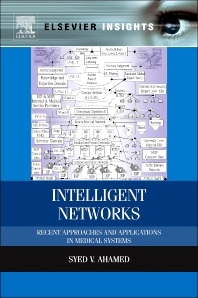Books in Computer science
Books in Computer science
The Computing collection presents a range of foundational and applied content across computer and data science, including fields such as Artificial Intelligence; Computational Modelling; Computer Networks, Computer Organization & Architecture, Computer Vision & Pattern Recognition, Data Management; Embedded Systems & Computer Engineering; HCI/User Interface Design; Information Security; Machine Learning; Network Security; Software Engineering.
- 1st Edition
- July 31, 2013
- Alan Oxley
- English
- Paperback9 7 8 1 8 4 3 3 4 7 1 4 9
- eBook9 7 8 1 7 8 0 6 3 3 8 0 0

Security Risks in Social Media Technologies
- 1st Edition
- July 19, 2013
- Peter Loshin
- English
- Paperback9 7 8 0 1 2 4 1 0 4 0 4 4
- eBook9 7 8 0 1 2 4 1 0 4 4 2 6

Practical Anonymity
- 1st Edition
- July 17, 2013
- Badong Chen + 3 more
- English
- Hardback9 7 8 0 1 2 4 0 4 5 7 4 3
- Paperback9 7 8 0 1 2 8 1 0 3 1 6 6
- eBook9 7 8 0 1 2 4 0 4 5 9 5 8

System Parameter Identification
- 2nd Edition
- Volume 103
- July 10, 2013
- H.P. Barendregt
- English
- Hardback9 7 8 0 4 4 4 8 6 7 4 8 3
- Paperback9 7 8 0 4 4 4 8 7 5 0 8 2
- eBook9 7 8 0 0 8 0 9 3 3 7 5 7

The Lambda Calculus
- 1st Edition
- July 4, 2013
- Sandra M. DeJong
- English
- Paperback9 7 8 0 1 2 4 0 8 1 2 8 4
- eBook9 7 8 0 1 2 4 0 8 0 6 8 3

Blogs and Tweets, Texting and Friending
- 1st Edition
- July 3, 2013
- Syed V. Ahamed
- English
- Hardback9 7 8 0 1 2 4 1 6 6 3 0 1
- Paperback9 7 8 0 1 2 8 1 0 2 8 0 0
- eBook9 7 8 0 1 2 4 1 6 6 7 0 7

Intelligent Networks
- 1st Edition
- July 3, 2013
- James Broad
- English
- Paperback9 7 8 1 5 9 7 4 9 9 9 5 8
- eBook9 7 8 0 1 2 4 0 4 7 2 3 5

Risk Management Framework
- 1st Edition
- July 1, 2013
- Kuang-Hua Chang
- English
- Hardback9 7 8 0 1 2 4 0 1 7 4 5 0
- eBook9 7 8 0 1 2 4 0 4 6 0 0 9

Product Manufacturing and Cost Estimating using CAD/CAE
- 1st Edition
- June 28, 2013
- James Shackleford + 2 more
- English
- Paperback9 7 8 0 1 2 4 0 7 7 4 1 6
- eBook9 7 8 0 1 2 4 0 7 8 8 0 2

High Performance Deformable Image Registration Algorithms for Manycore Processors
- 2nd Edition
- June 27, 2013
- Thomas Wilhelm
- English
- Paperback9 7 8 1 5 9 7 4 9 9 9 3 4
- eBook9 7 8 0 1 2 4 0 4 6 1 8 4

Professional Penetration Testing